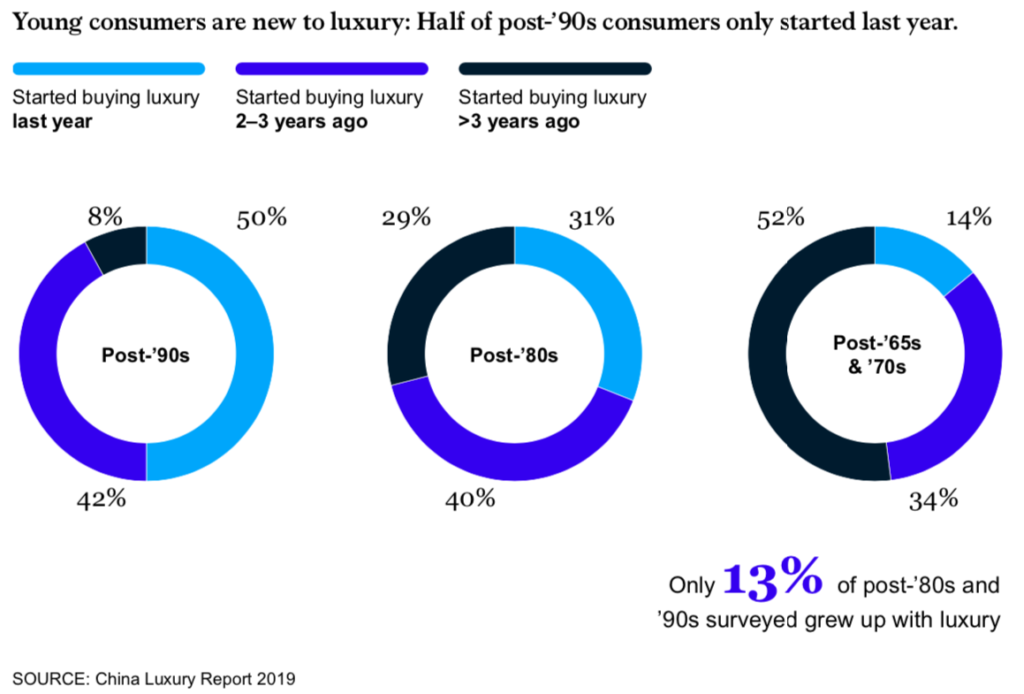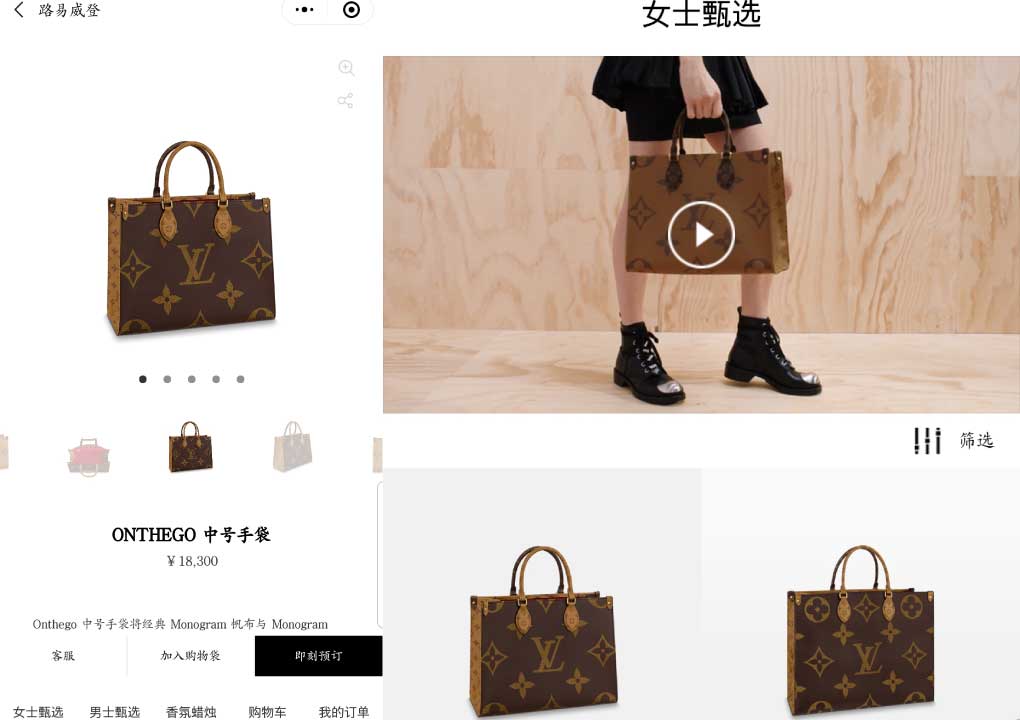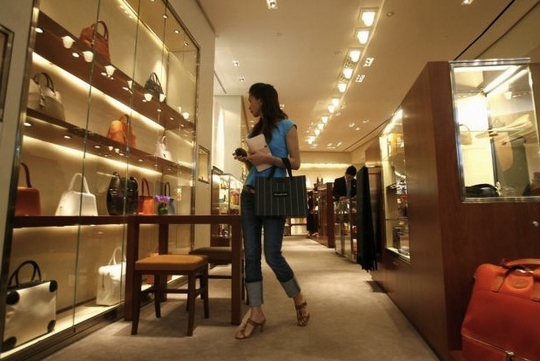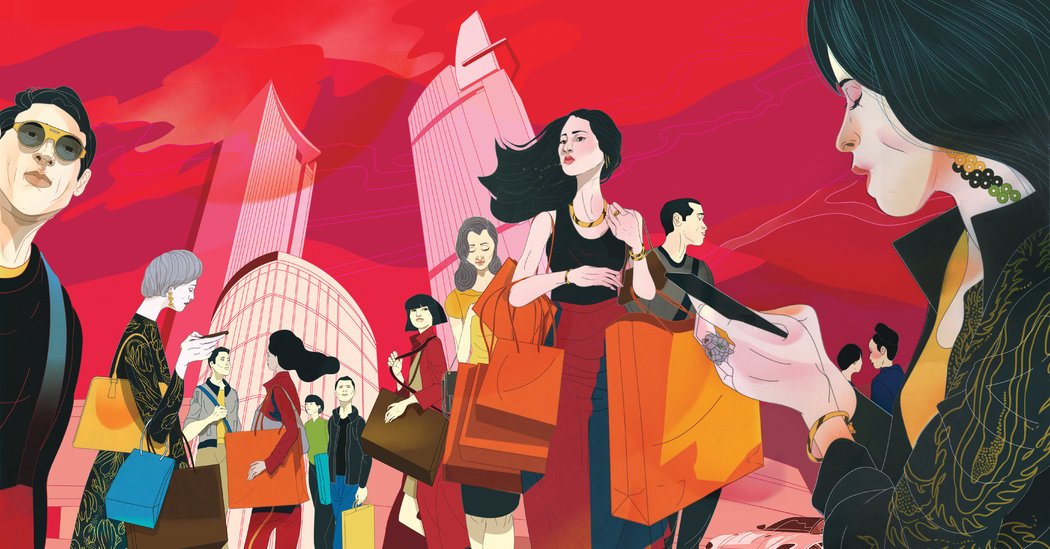Just ten years ago, luxury fashion was a space for the primarily white elite. Front row seats at fashion shows were for legacy publication editors; advertising space featured impossibly thin, white models; and stores were for well-heeled shoppers with deep wallets that could buy into the traditional luxury fantasy.
But with the onset of social media, this fantasy burst. Yet another new crop of faces laying claim to prime real estate were influencers, whose personal brands and audience reach now surpass those of traditional fashion glossies.
How young Chinese consumers are reshaping luxury in China
Research for the 2019 McKinsey China Luxury Report shows that China’s young consumers are new to luxury, and thus have a less nuanced understanding of the heritage upon which the market traditionally trades.

Instead of legacy reputations established over hundreds of years in Europe, these new luxury consumers are influenced more by what is happening right now, leaving ample room for brands with the right strategy to shape their tastes.
The rise of streetwear as the new luxury in China
And soon, the most important item on any given runway became a pair of sneakers in lieu of the latest it-bag or heel. All this change was accompanied by a new word, either murmured with quiet interest or brandished like a war banner in the face of luxury heavy-hitters: streetwear. Critics have often pegged streetwear as a fad, but recent seasons have indeed started to revert to comparatively tailored clothing, subtle palettes, and less “streetwear-looking” streetwear.

While some styles continue to change, the new audience to which it caters remains the same: proving that streetwear has an influence that reaches far beyond the product. The true impact of streetwear is a new mindset and shift in power and is now emulated and celebrated by the luxury elite.
Traditional luxury VS popular luxury
- Traditional luxury is often described as for top-down chain of influence where companies are tastemakers. It’s aspirational and based on couture and formal inspirations. Luxury on its first form aimed to propagate economic status, social status, and classism, covered due to exclusionary practices and othering. The ideals of traditional luxury are created and maintained by monied fashion houses, print magazines, and ads. Regarding the value drivers, they often are the same: mainstream media, celebrity endorsement… drove by money first, to make a clear distinction between the rich and the poor.

- Popular luxury is on the contrary described as a chain of influence where audiences are tastemakers more than companies. It’s accessible thanks to new luxury forms: ready-to-wear, casual wear, sneakers, sportswear… It highlights elements of popular culture and subcultures and is coveted due to popular opinion and consumers’ demand, not fashion houses. Drop models, the “hype” and influencers or celebrities’ style are now the new value drivers. In popular luxury, the power is the inclusion of a mass audience, both rich and poor without clear distinction.

While traditional luxury is created by and for the predominantly white elite, popular luxury establishes that luxury is for all people of the time. The system has changed, irrevocably and for the better. Below, we break down the elements of how and why it has come to do so.
When it comes to luxury in China, everything is media, social is everywhere
Being relatively new to luxury, Chinese consumers are constantly tapping various forms of content as they strive to improve their awareness of the market. Chinese luxury buyers consult a mix of online and offline sources during the three to five hours per week they spend absorbing information on luxury and fashion, with every single one saying they were exposed to digital influence at some point in their customer journey.

At every touchpoint, from e-commerce to in-store, and of course through social media, consumers are seeking to pick up information about the latest luxury products, the celebrities who promote them, and the lifestyles they embody. Only traditional ads fail to command the avid attention of consumers.
A new shift for social luxury in China
China’s young luxury consumers are more interested in aspiration than heritage, making it imperative for brands to modernize their stories and deliver them through digital channels. Savvy brands should design an integrated marketing strategy that satisfies young Chinese consumers’ appetite for consuming media at every available touchpoint.

Whether they are online or offline, and whether they are traveling or staying in China, those touchpoints are to consider. Local digital marketing teams should be empowered to make quick decisions and entrusted to experiment with the new media formats and channels favored by young consumers.
Which strategy for new “popular” luxury brands in China?
Since the majority of luxury purchases are made offline, brands should also reimagine the in-store experience. Catering to young consumers’ desire for personalization is key, as is doubling down on the concept of the store as its own media channel. Brands would also be wise to invest in highly trained staff capable of maintaining one-to-one relationships with customers in and beyond the store.

In effect, staff becomes their personal stylists, backed by customized narratives and personalized product recommendations powered by AI. Perhaps the most exciting aspect of China’s young luxury market is the scope of opportunity for digitally savvy brands to capture its ever-shifting zeitgeist, and the imperatives this provides for more established brands to stay on top of their game.
Contact GMA to stay up-to-date with luxury trends in China!
With more than 7 years of experience in China, our team of multicultural digital marketing experts can help you with many services. We have more than 70 case studies of luxury brands who trusted us to tailor their digital marketing strategy to the Chinese market. From KOLs marketing to Baidu SEO, we can help you define your desires to fit your Chinese audience. Don’t miss the trend, contact us!

Read more about luxury trends in China:

